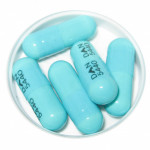Vitamin D insufficiency is common among people living with HIV in the United States—although not necessarily more so compared with the general population—according to a study reported on Friday, February 19, at the 17th Conference on Retroviruses and Opportunistic Infections (CROI) in San Francisco.
Bone loss is a growing concern for people with HIV. This is partly because researchers are finding that people with HIV have bone problems at a younger age and are more likely to experience fractures than their HIV-negative counterparts. In addition, people with HIV are also living to the age that uninfected people begin to have bone problems.
Vitamin D is a critical part of bone health. Without it, the body cannot absorb calcium, which makes up the structure of all bones. Vitamin D deficiency has also been linked to higher cancer rates, cardiovascular disease and diabetes.
About 77 percent of the U.S. population is vitamin D insufficient, according to Christine Dao, MD, of the U.S. Centers for Disease Control and Prevention (CDC) and the lead presenter of the study presented at CROI.
There are a number of possible causes for this, including decreases in exposure to the sun—living in northern climates and using sun screens are factors—race, gender, body mass index, age and chronic illness. The reason for vitamin D deficiency among people living with HIV is not clear.
A simple blood test can be used to measure the amount of vitamin D—specifically 25-hydroxyvitamin D. A healthy, or sufficient, level is 30 to 60 nanograms per milliliter (ng/mL) of blood. An insufficient level is between 20 and 30 ng/mL, and vitamin D deficiency—the more serious of the two—is generally any level of 25-hydroxyvitamin D below 20 ng/mL.
Dao reported on vitamin D levels among 672 HIV-positive individuals participating in the SUN Study being conducted at clinics in four U.S. cities. Not a single participant was receiving vitamin D supplements.
About 77 percent of the study participants were men, 30 percent were black, and 10 percent were Hispanic. The average CD4 count was 471 cells, and roughly 74 percent had viral loads below 400 copies/mL.
Nearly 72 percent of the patients included in the analysis were found to have a deficiency in 25-hydroxyvitamin D. Dao did not include the rate of vitamin D deficiency in the presentation.
Black race, Hispanic ethnicity, lower exposure to the sun’s UV rays, high blood pressure, lack of exercise and exposure to efavirenz (found in Sustiva and Atripla) were all associated with an increased risk of vitamin D insufficiency. Conversely, renal insufficiency (kidney problems) and Norvir (ritonavir) were associated with a reduced risk of vitamin D insufficiency.
Though these data indicate that vitamin D insufficiency is common among people living with HIV, the rate is similar to that seen in the general population. Given limitations in the data collected, however, Dao’s group was unable to conduct an analysis of vitamin D levels among those living with HIV compared with age-matched individuals in the general population.






1 Comment
1 Comment